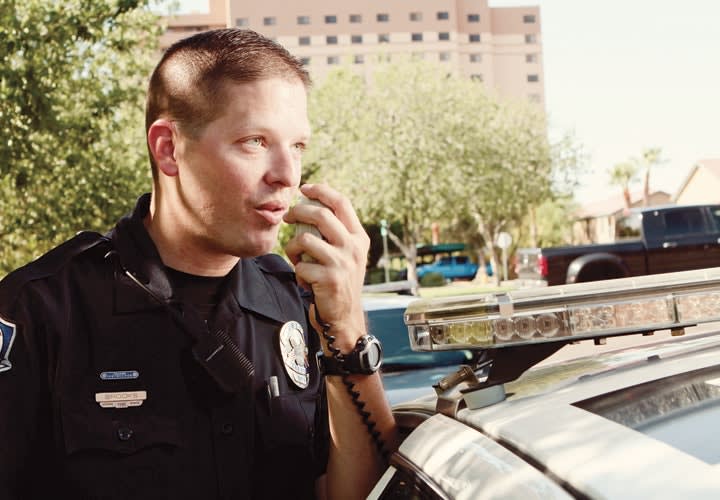Harris also sells a ruggedized Android phone specifically for use with BeOn. The InTouch RPC-200 sports a 23mm thick display. The standard glass on an Android phone like the Samsung Galaxy is about 10mm thick. The InTouch also has a more powerful battery than a commercial cellphone, which gives it longer use time. May says he doesn't regard the RPC-200 as a replacement for a mission critical LMR portable. "I see it as a tool for somebody who is trying to direct an incident command and look at a wide variety of data—video, floor plans, etc.—to help with that incident response," he says.
Motorola calls its cellphone app Unified PTT. The app allows officers who do not carry portable radios such as chiefs, supervisors, and officers with other agencies to communicate with Project 25 users. Unified PTT also allows users on Public Safety LTE to communicate and establish secure, private broadband talk groups.
So far this development of hybrid cellular and radio systems is one-sided and experts say it will be a while before you start seeing combination/LMR cellular handsets. The reason that adding cellular technology to LMR radios is so difficult is that there are restrictions inherent in the radio designs that currently limit broadband functionality. In other words, LMR police radios are built to be LMR radios. So broadband data functionality is secondary to the primary purpose of the radio, voice communication.
That's not to say there aren't some benefits to broadband access on police radios. It's just that the benefits are not readily evident to the average officer.
Broadband capability on police radios is very useful for radio programmers. Broadband is a larger pipeline, which means the radios can be programmed more efficiently. When you have to reprogram 4,000 radios, you can shoot out the reprogramming en masse similar to how the incremental computer operating system updates can be downloaded over broadband.












